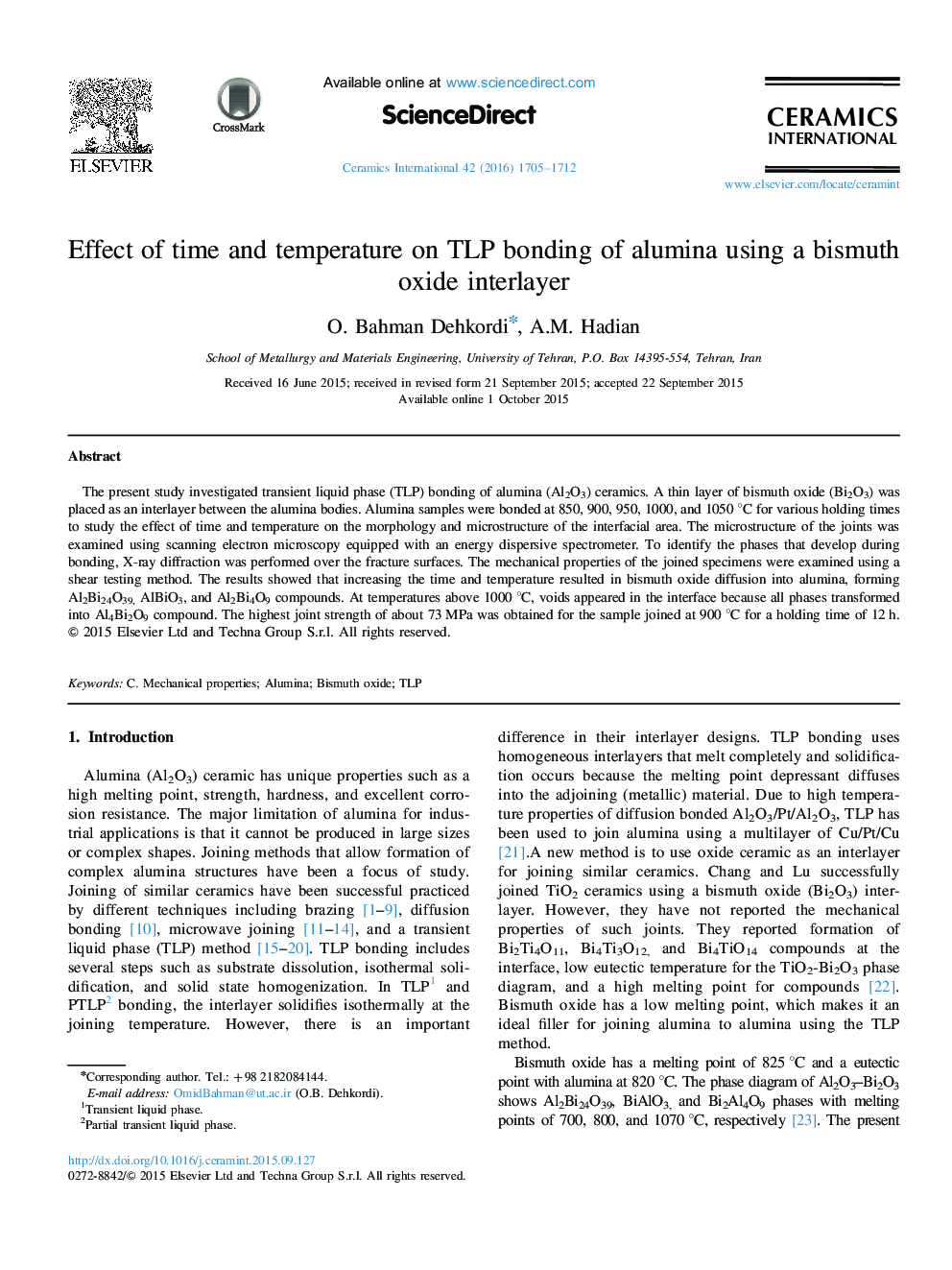| Article ID | Journal | Published Year | Pages | File Type |
|---|---|---|---|---|
| 10624515 | Ceramics International | 2016 | 8 Pages |
Abstract
The present study investigated transient liquid phase (TLP) bonding of alumina (Al2O3) ceramics. A thin layer of bismuth oxide (Bi2O3) was placed as an interlayer between the alumina bodies. Alumina samples were bonded at 850, 900, 950, 1000, and 1050 °C for various holding times to study the effect of time and temperature on the morphology and microstructure of the interfacial area. The microstructure of the joints was examined using scanning electron microscopy equipped with an energy dispersive spectrometer. To identify the phases that develop during bonding, X-ray diffraction was performed over the fracture surfaces. The mechanical properties of the joined specimens were examined using a shear testing method. The results showed that increasing the time and temperature resulted in bismuth oxide diffusion into alumina, forming Al2Bi24O39, AlBiO3, and Al2Bi4O9 compounds. At temperatures above 1000 °C, voids appeared in the interface because all phases transformed into Al4Bi2O9 compound. The highest joint strength of about 73 MPa was obtained for the sample joined at 900 °C for a holding time of 12 h.
Related Topics
Physical Sciences and Engineering
Materials Science
Ceramics and Composites
Authors
O. Bahman Dehkordi, A.M. Hadian,
